Hunting Books in Boston and New York
By Xu Xi
Nowadays e-reading seems to be a common practice with the mushrooming of various digital reading devices. When I began my postgraduate study nearly four years ago, it was rare to see any e-reader user in the School of English. But today, when you drop by a postgraduate office or go to a departmental seminar, you find students and teachers with their heads buried in their respective iPads or Kindles. There are indeed two Kindles in my home: a big screen Kindle DX for reading journal papers in PDF, and a smaller and lighter Kindle Touch for leisure reading. However, being an e-book reader does not mean that I’ve forgotten the physical and emotional pleasure offered by the printed version, and I still like to dash into a traditional bookstore whenever I have a chance. In fact, last February, I went to attend the 15th Annual Harvard East Asia Society Graduate Student Conference. It was my first trip to the United States, and I decided to take full advantage of this trip by visiting three bookstores and hunting for some good bargains.
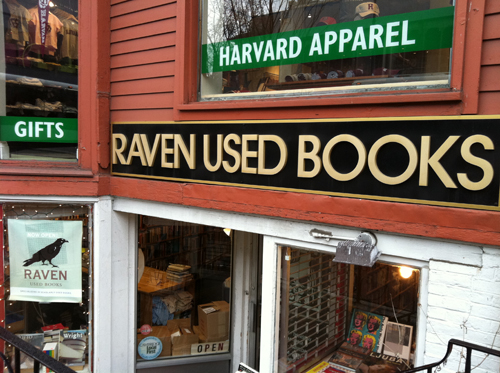
Raven Used Books was recommended to me by a former teacher who had been a visiting scholar at Harvard University from last year. Half-underground, it is located in JFK Street, just a few minutes away from the Harvard Square Station. It is not spacious, but the books are well-classified and easy to browse, and the shop has distinguished itself through its selection of scholarly books. The ‘Best Sellers’ shelf usually occupies the most noticeable place in many bookstores, but Raven does not welcome any notable Stephen Kings or Dan Browns. Instead, visitors will see shelves with labels such as ‘Classics’, ‘Religion’, and ‘Marxism and Anarchism’. From the last shelf I found Stephen Spender’s The 30’s and After and The Life of G. D. H. Cole written by his wife. For erudite readers who know more than one European language, Raven offers a special shelf where they will be delighted to find books by Claude Lévi-Strauss in French and poems by Rainer Maria Rilke in German.
Another big allure of Raven is its low price, which is often between 50% – 80% of the cover price. The best bargain I got was the authorized literary biography of Stephen Spender by John Sutherland. It is thick (627 pages in total) and brand new with a hardcover. The cover price of this book is $40, Kindle Edition charges $42 and the lowest price for a used one on Amazon is $11.59, but Raven only charged me $7.95! By the way, people love to talk about books here. Two ladies exchanged views about the novels of George Eliot while they were browsing through the shelves.
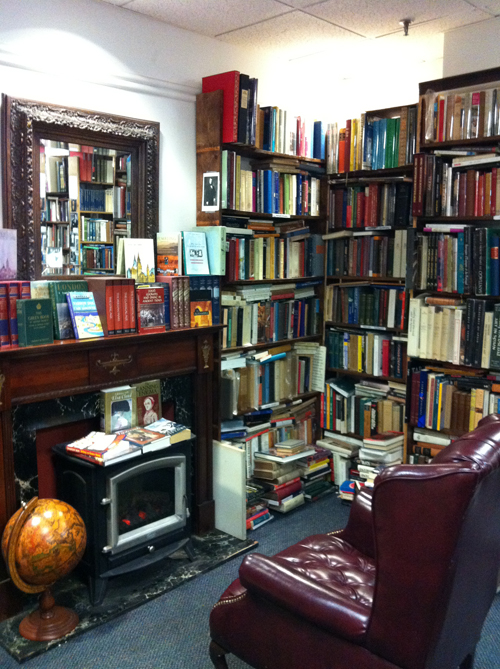
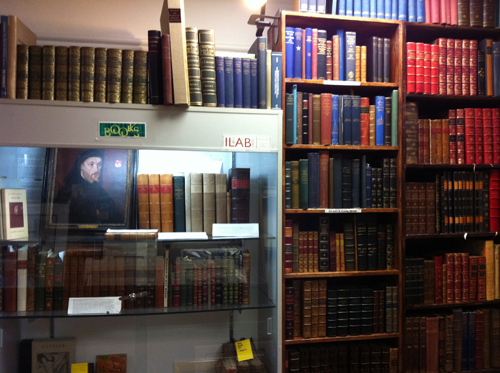
A fellow postgraduate and I came across the Commonwealth Books and Old Prints when we were walking along the famous ‘Freedom Trail’ of Boston. It is located around the Old South Church in downtown Boston. Although it is much bigger than Raven, there are lots of books lying on the floor (just like what is happening in the Fung Ping Shan Library). It specializes in rare, antique books and other precious artifacts. Here you can buy Ludwig Wittgenstein’s Philosophical Investigations for $500 (first English edition) and Virginia Woolf’s A Room of One’s Own for $11,500 (original burgundy cloth, No. 80 of 100 of the Hogarth Press limited edition with Woolf’s signature). It also exhibits a 16th Century portrait of Chaucer and a 1673 portrait of John Bunyan once owned by Robert Louis Stevenson. But don’t be scared by the sky-high prices. Browsers are welcome. You can pick up a book and take a short rest in the (antique?) leather armchair. With all the old books, a simulated fireplace and a lovely cat sitting at your feet, you may feel like you have been transported to a traditional New England study room.
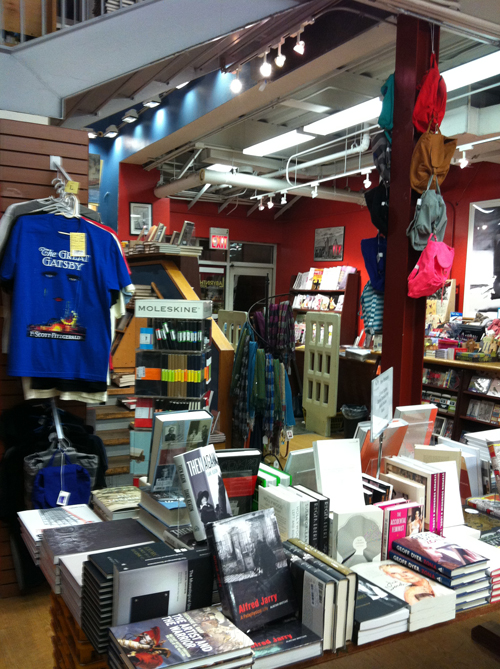
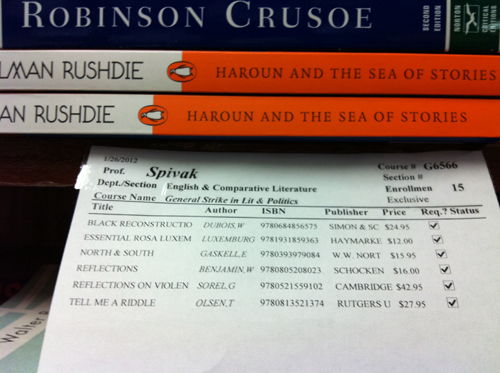
Book Culture was introduced to me by a friend who studies at Columbia University. He said many teachers hold book launches at this bookstore, which is only three blocks away from the campus. Walking into it, you immediately feel the fashion of New York City. It’s spacious and the light is bright. Apart from colorful books, you will see beautiful T-shirts, reusable canvas bags, scarves, schoolbags, Moleskine notebooks and postcards. This is the first floor, which mainly exhibits the ‘New Releases’. Along the stairs to the second floor lie the ‘Remainders’.
The second floor is a mixed place: it has a children’s corner and two or three shelves for used bargain books, but the rest of it looks more like a library with many high shelves. These shelves are occupied by textbooks assigned by the faculties of Columbia University. There are many attached cards, on which you can find the course name, the teacher, and the required/recommended readings. This is not only good for university students, but also for common readers. A course titled ‘General Strike in Lit. & Politics’ is offered by Prof. Spivak from the Department of English and Comparative Literature. Spending two hours in the store, I finally bought two books. One is a remainder ($10), Richard Overy’s The Twilight Years: The Paradox of Britain between the Wars since I am very interested in the interwar history and literature of Britain. The other is a bargain book ($2), a modern rendering of William Caxton’s The Description of Britain for its wonderful illustrations (it turns out to be manufactured in Hong Kong!).
It is a truth universally acknowledged, that a top university in possession of a good number of bookworms, must be in want of a great bookstore. Yes, we already have a university bookstore, but I wonder why we do not seem to want more of these fascinating places.

Our apologies, you must be logged in to post a comment.